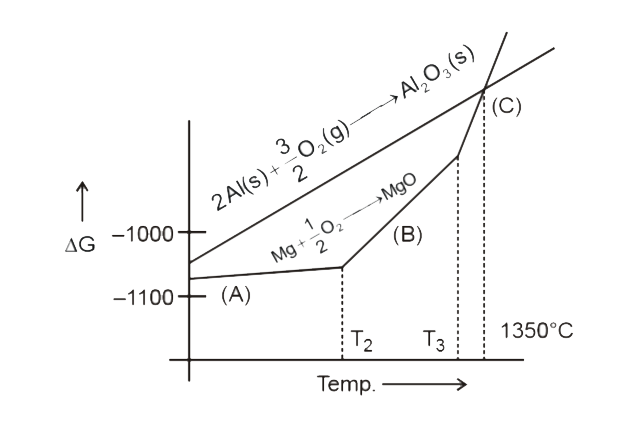3Mg(s)+N2(g)Δ−−→Mg3N2(s) is -
Decomposition reaction
Combination reaction
Displacement reaction
None of these
The correct Answer is:B
Similar Questions
3Mg(s)+N2(g)Δ−−→Mg3N2
View SolutionTotal number of redox reactions among the given reactions is
i. CaO+SO3→CaSO4
ii. 4Cu+O2→2Cu2O
iii. MgO+CO2→MgCO3
iv. SO2+H2O→H2SO3
v. 2KClO3(s)Δ−−→2KCl(s)+3O2(g)
vi. 3Mg(s)+N2(g)Δ−−→Mg3N2(s)
vii. Cr2O3(s)+2Al(s)Δ−−→Al2O3(s)+2Cr(s)
viii. 2H2O(l)+2F2(g)→4HF(aq)+O2(g)
View Solution
Knowledge Check
Ba(N3)2Δ−−→Ba+N2↑⏐⏐
AFor disproportionation reaction.BFor comproportionation reaction.CFor either intermolecular redox reaction or displacement reactionDFor either thermal combination redox reaction or thermal decomposition redox reaction.Equal mass of KClO3 undergoes different reactions in two different containers:
2KClO3(s)Δ−−→2KCl(s)+3O2(g) ………………..(i)
4KClO3(s)Δ−−→KCl(s)+3KClO4(s)………………..(ii)
Mass ratio of KCl produced in respective reaction is n:1 then, value of n will be:A4B2C74.5D90
Which of the following statements are true :
A→Mg(s)+12O2(g)T1−−→MgO(s)
B→mg(?)+12O2(g)T2−−→MgO(s)
C→mg(g)+12O(g)T3−−→MgO(s)

I : Below 1350∘ Mg can reduce Al2O3
II : Above 1350∘C Mg Will reduce Al2O3
III : Below 1350∘ Al can reduce MgO
IV : Above 1350∘ Al can reduce MgO
V : At 1350∘C there is no change in free energy i.e., ΔG=0
View SolutionMg(NO3)2Heat−−→
View SolutionBa(N3)2Δ−−→Ba+N2↑⏐⏐
View SolutionBa(N3)2Δ−−→Ba+N2↑⏐⏐
View SolutionComplete the following :
(i) CaSO4.2H2Oheat−−→ (ii) MgO+C+CI2heat−−→
(iii) Mg(NO3)2Heat−−→ (iv) Mg+NOHeat−−→
CaC2+N2→ (vi) Mg3N2+H2O→
View SolutionBalance the following chemical equation and identify the type of chemical reaction.
(a) Mg(s)+Cl2(g)→MgCl2(s)
(b)HgO(s)Heat−−→Hg(l)+O2(g)
(c)Na(s)+S(s)Fuse−−→Na2S(s)
(d)TiCl4(l)+Mg(s)→Ti(s)+MgCl2(s) ,
(e)CaO(s)+SiO2(s)→CaSiO3(s)
(f)H2O2(l)UV−−→H2O(l)+O2(g)
View Solution
